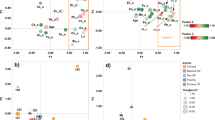Abstract
Objective: The National Institute for Occupational Safety and Health (NIOSH) recently conducted a cross–sectional study during gold mining operations near El Callao, Venezuela. The purpose of the study was to assess mercury exposures and mercury-related microdamage to the kidneys. The study consisted of concurrent occupational hygiene and biological monitoring, and an examination of the processing techniques employed at the different mining facilities. Mercury was used in these facilities to remove gold by forming a mercury-gold amalgam. The gold was purified either by heating the amalgam in the open with a propane torch or by using a small retort. Methods: Thirty-eight workers participated in this study. Some participants were employed by a large mining company, while others were considered “informal miners” (self-employed). Mercury exposure was monitored by sampling air from the workers' breathing zones. These full-shift air samples were used to calculate time-weighted average (TWA) mercury exposure concentrations. A questionnaire was administered and a spot urine sample was collected. Each urine sample was analyzed for mercury, creatinine, and N-acetyl-ß-d-glucosaminidase (NAG). Results: The range for the 8-h TWA airborne mercury exposure concentrations was 0.1 to 6,315 μg/m3, with a mean of 183 μg/m3. Twenty percent of the TWA airborne mercury exposure measurements were above the NIOSH recommended exposure limit (REL) of 50 μg/m3, and 26% exceeded the American Conference of Governmental Industrial Hygienists (ACGIH) threshold limit value (TLV) of 25 μg/m3. The mean urine mercury concentration was 101 μg/g creatinine (μg/g-Cr), and the data ranged from 2.5 to 912 μg/g-Cr. Forty–two percent of the study participants had urine mercury concentrations that exceeded the ACGIH biological exposure index (BEI) of 35 μg/g-Cr. Urinary NAG excretion is considered a biological marker of preclinical, nonspecific microdamage to the kidney's proximal tubule cells. The mean urine NAG concentration was 3.6 International Units/g-Cr (IU/g-Cr) with a range of 0.5 to 11.5 IU/g-Cr. Three workers had urine NAG levels in excess of the reference values. Correlation analyses found statistically significant correlations between airborne mercury exposure and urine mercury level (P=0.01), and between urine mercury level and urine NAG excretion (P=0.01). In addition, the airborne mercury exposure data and urine mercury data were segregated by job tasks. A Wilcoxon rank sum test revealed significant correlations between tasks and mercury exposure (P=0.03), and between tasks and urine mercury level (P=0.02). Conclusions: The tasks with the highest mean airborne mercury exposures were “burning the mercury-gold amalgam” and “gold refining/smelting”. Recommendations were provided for improving the retort design to better contain mercury, for ventilation in the gold shops, and for medical surveillance and educational programs.
Similar content being viewed by others
Author information
Authors and Affiliations
Additional information
Received: 16 November 1999 / Accepted: 2 October 2000
Rights and permissions
About this article
Cite this article
Drake, P., Rojas, M., Reh, C. et al. Occupational exposure to airborne mercury during gold mining operations near El Callao, Venezuela. Int Arch Occup Environ Health 74, 206–212 (2001). https://doi.org/10.1007/s004200000206
Issue Date:
DOI: https://doi.org/10.1007/s004200000206




